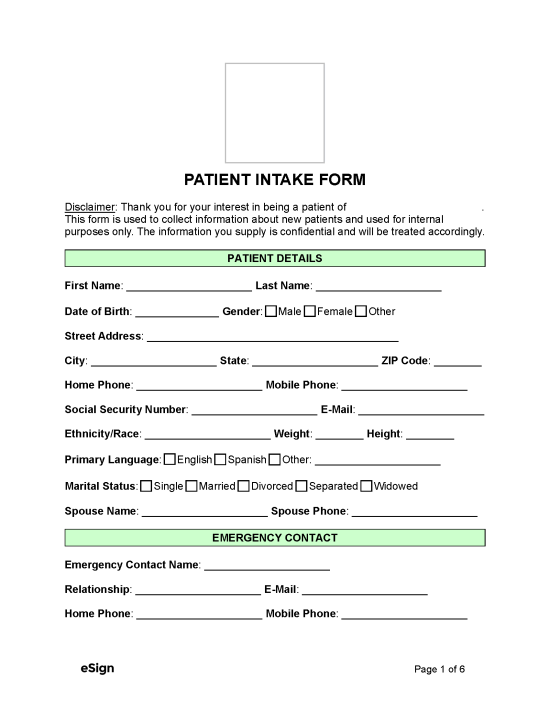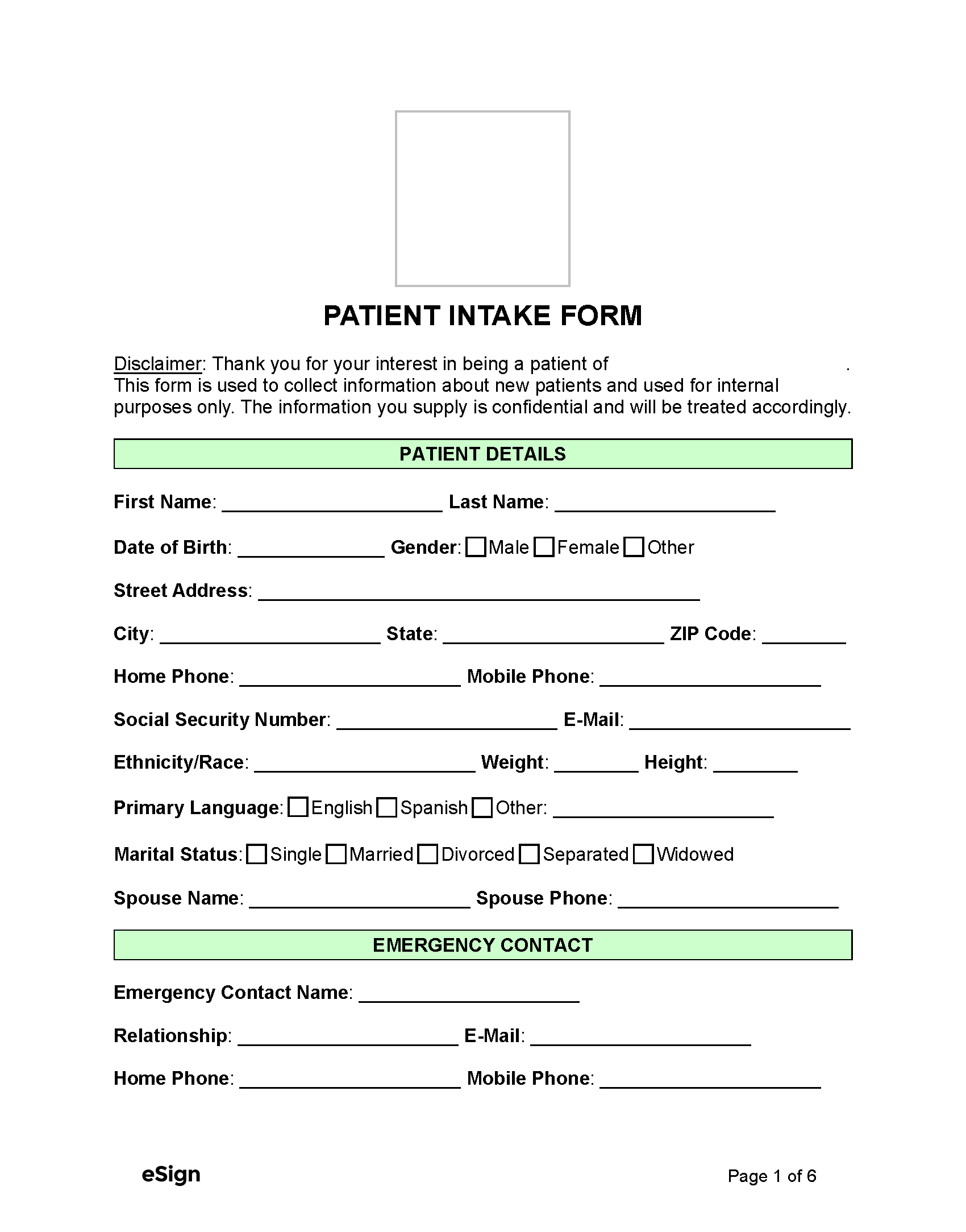Notice of Privacy Practices
Under the Health Insurance Portability and Accountability Act (HIPAA), most healthcare facilities have an obligation to notify patients how their medical information will be used and shared. This notice, called a Notice of Privacy Practices, should be made available during the patient’s first appointment.
HIPAA Resources
What the Template Includes
This section lists the patient’s name, contact information, weight, height, preferred language, and Social Security number.
The patient must provide the name and phone number of someone who can be contacted in an emergency.
Patients with health insurance must enter the policy number, group number, and insurance type (e.g., HMO, PPO).
The healthcare facility will ask the patient to provide their primary care physician’s name and phone number.
Patients must state their allergies, medications, family health history, and previous illnesses or surgeries. Sharing this information allows healthcare providers to make a more accurate diagnosis and implement better solutions for the patient’s treatment.
In this portion of the form, the patient can explain their recent health issues, their symptoms, how long they’ve experienced problems, and how severe their pain is.
Healthcare facilities will ask patients to reveal certain details about their lifestyle and social habits, including whether they drink alcohol, smoke, use drugs, or exercise regularly.
When It’s Used
New Patients
Patients usually fill out an intake form when first visiting a clinic or hospital. The healthcare facility’s receptionist or intake coordinator evaluates the completed form before entering the patient’s information into the facility’s database.
An intake form is also used when a patient starts seeing a specialist or changes doctors. The form promotes a seamless transition of care by giving the healthcare provider insight into the patient’s medical history, ongoing treatments, and current medications.
Returning Patients
Providers can have returning patients complete an intake form to update their healthcare information. For instance, if a patient changes insurance policies, begins taking medication, or receives a diagnosis from another physician, this information will be relayed in the form.

